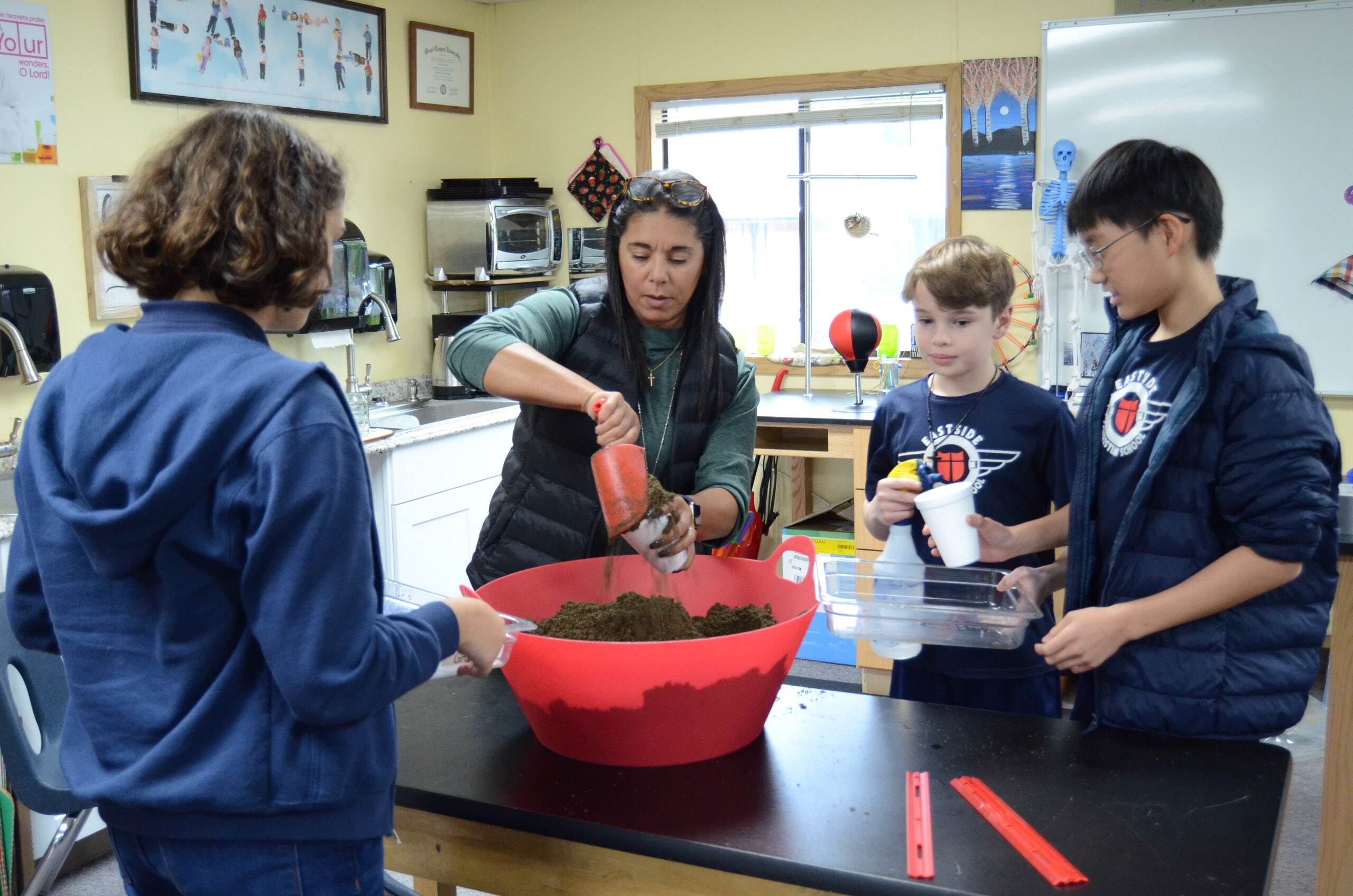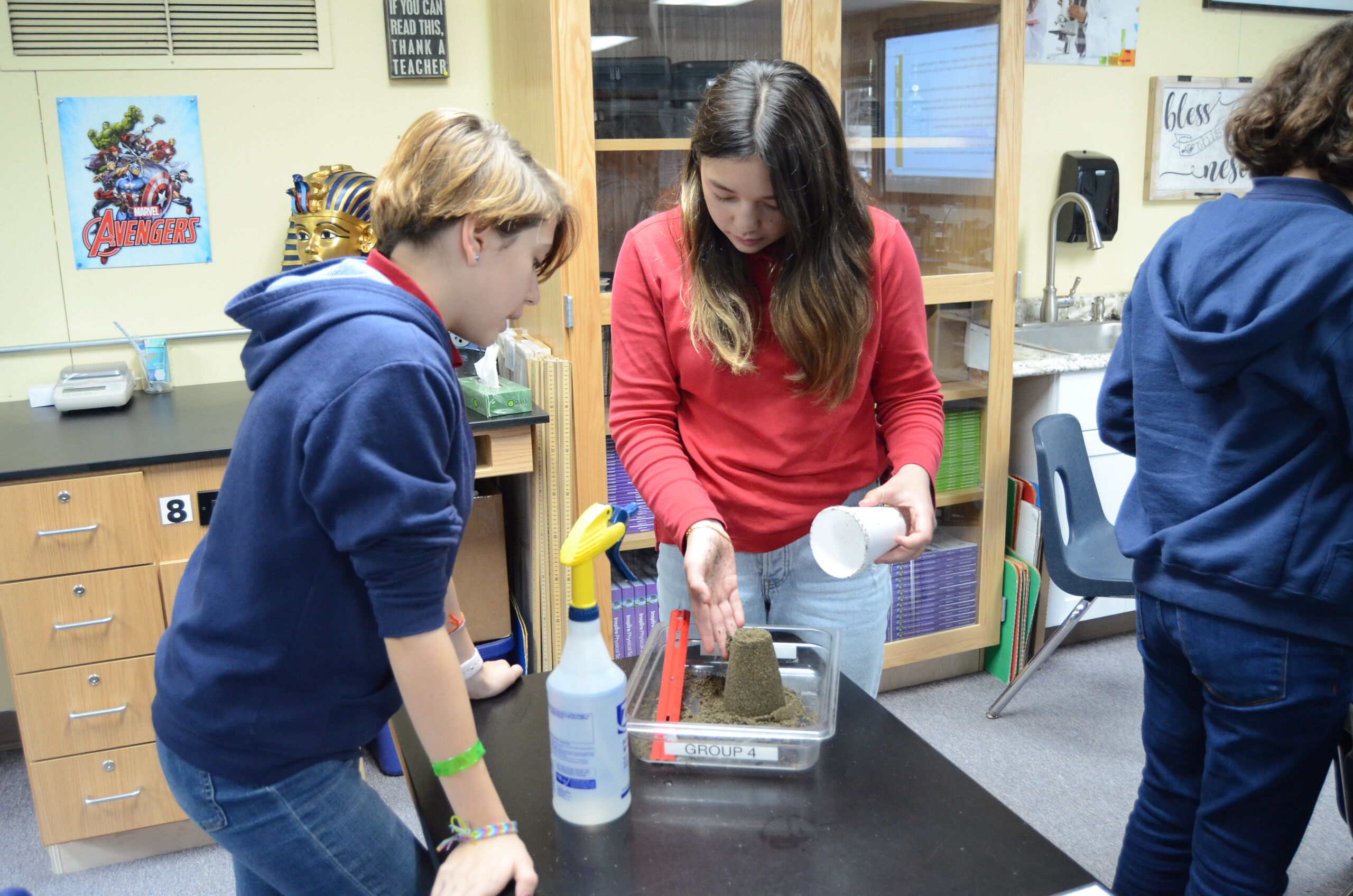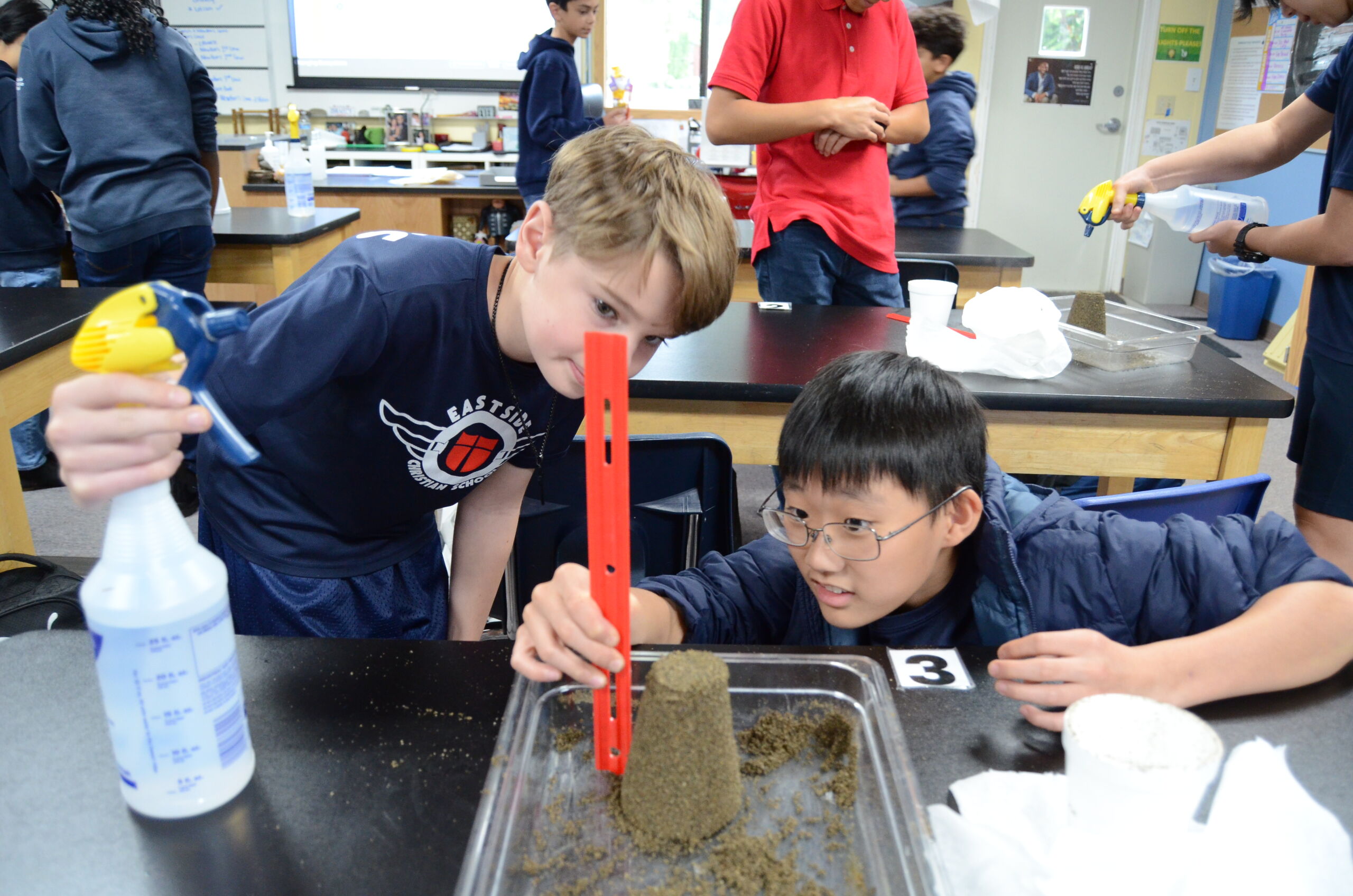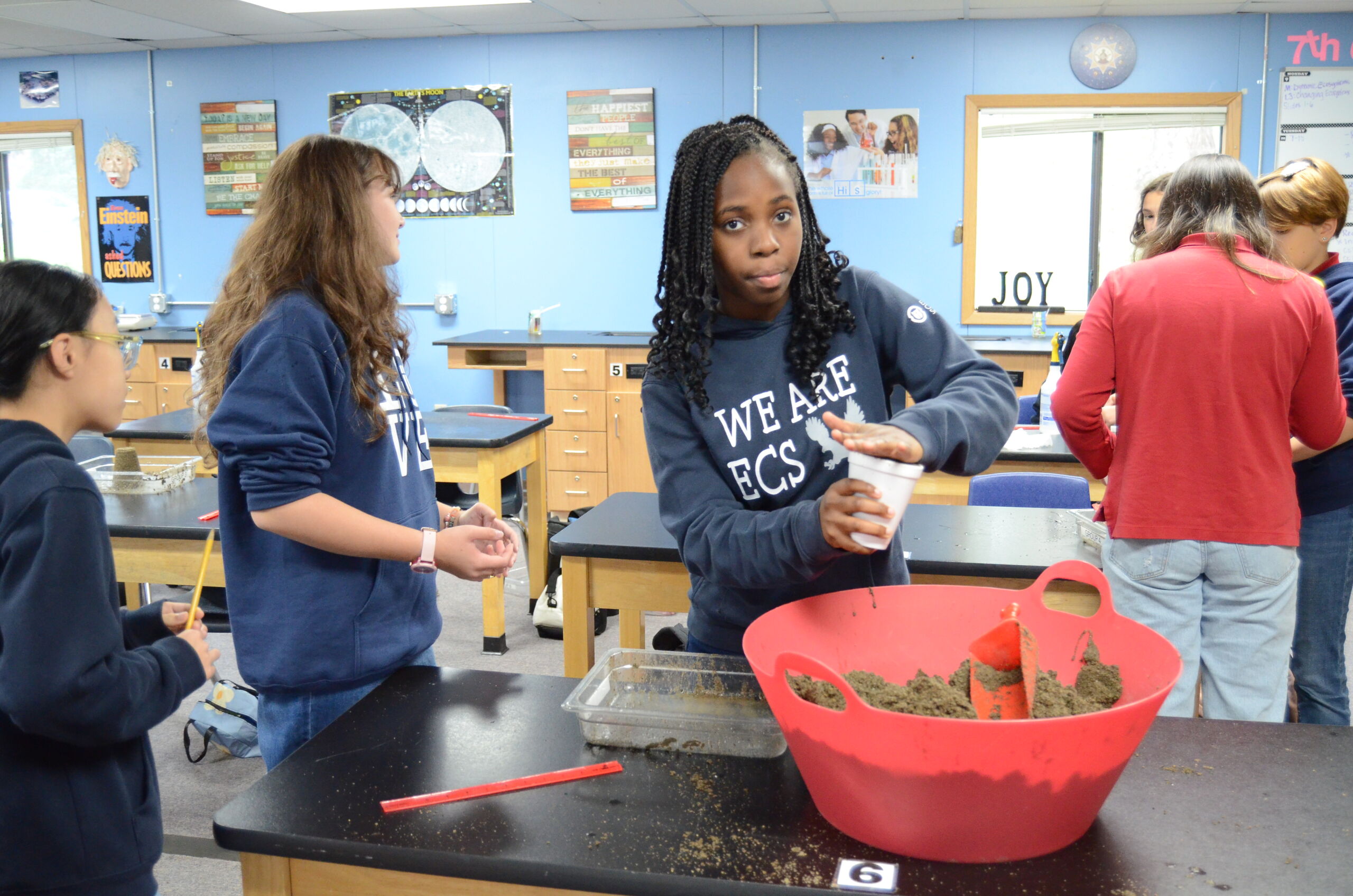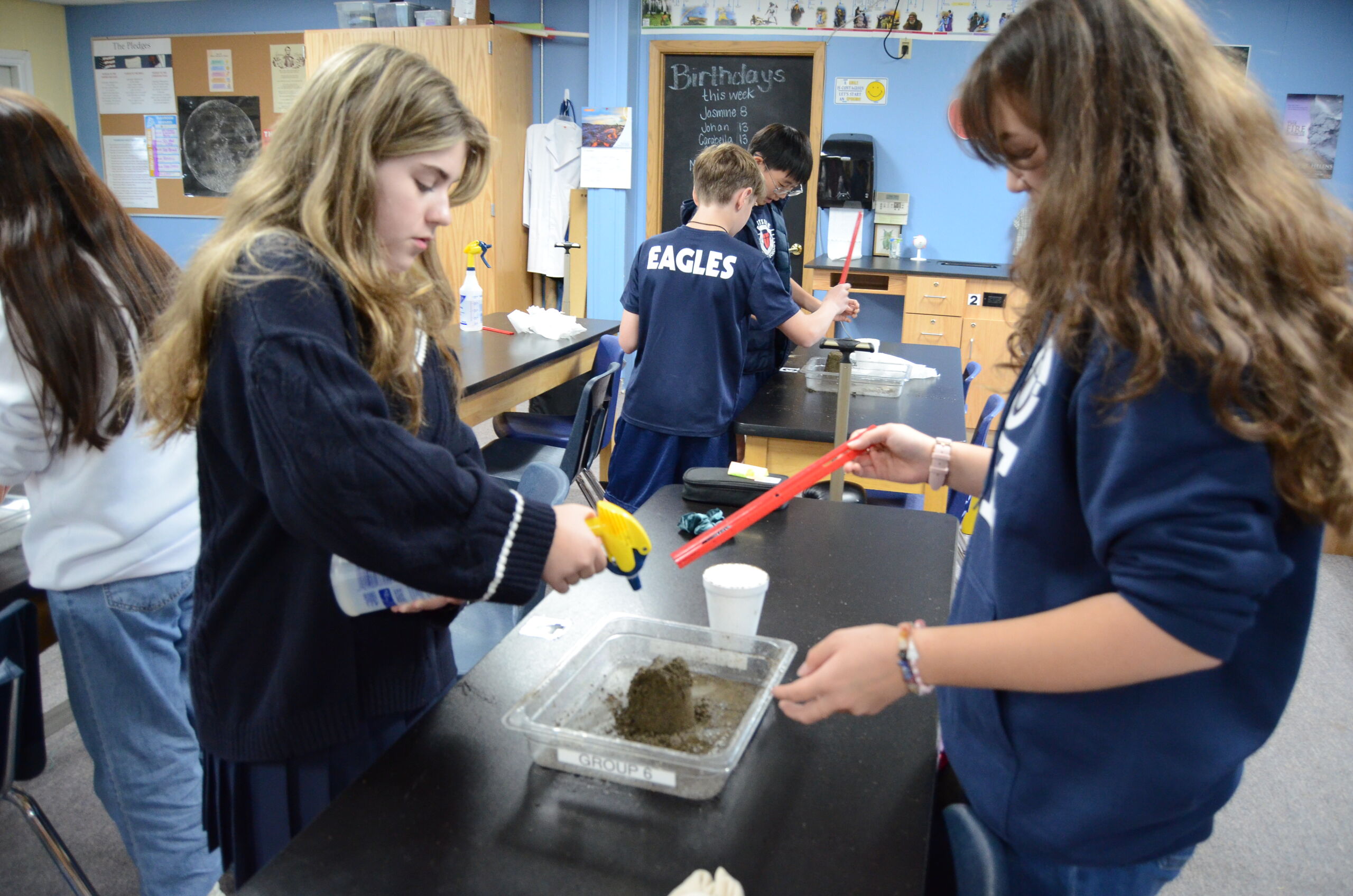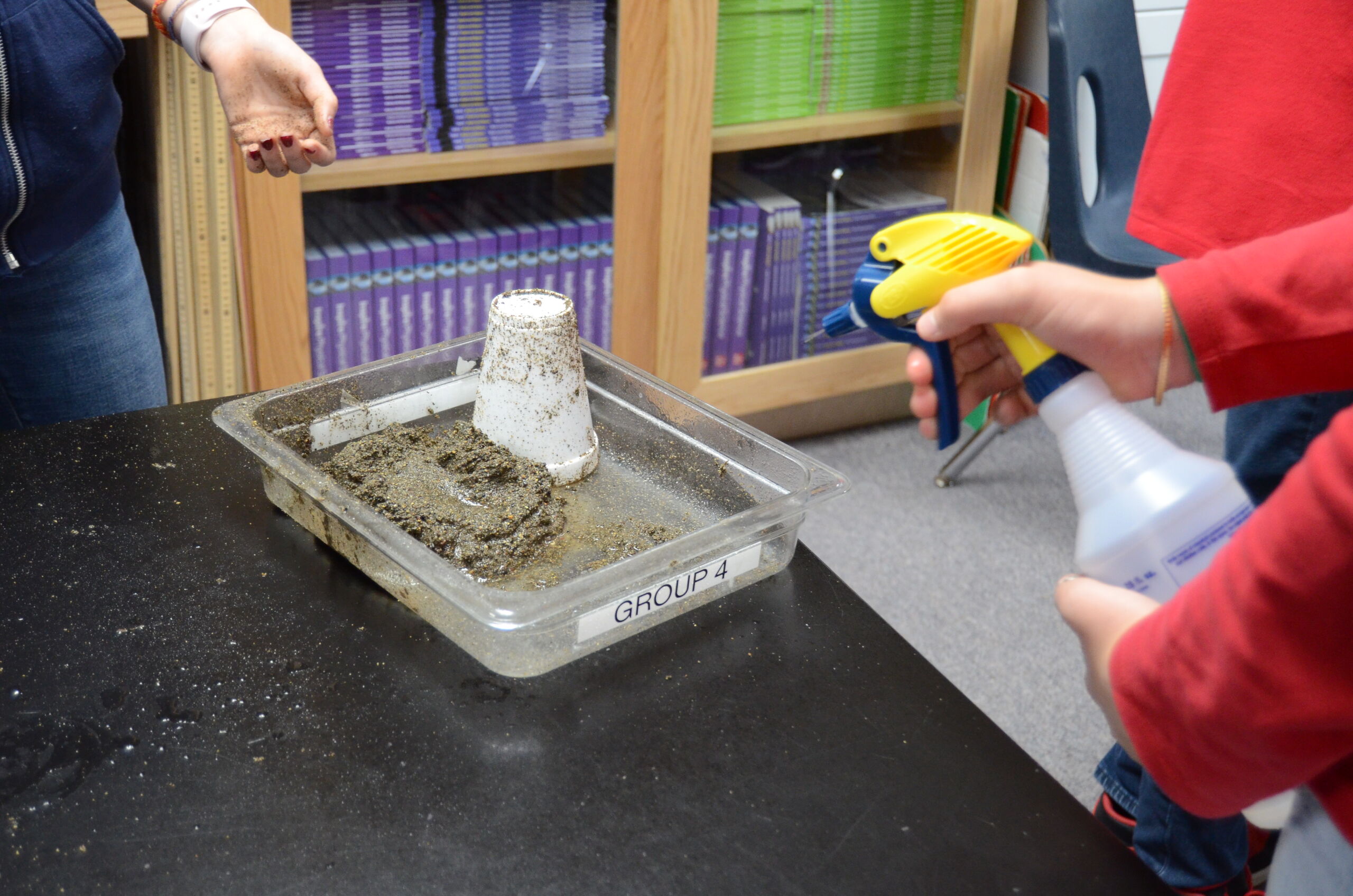STEM: Sediment and Streams
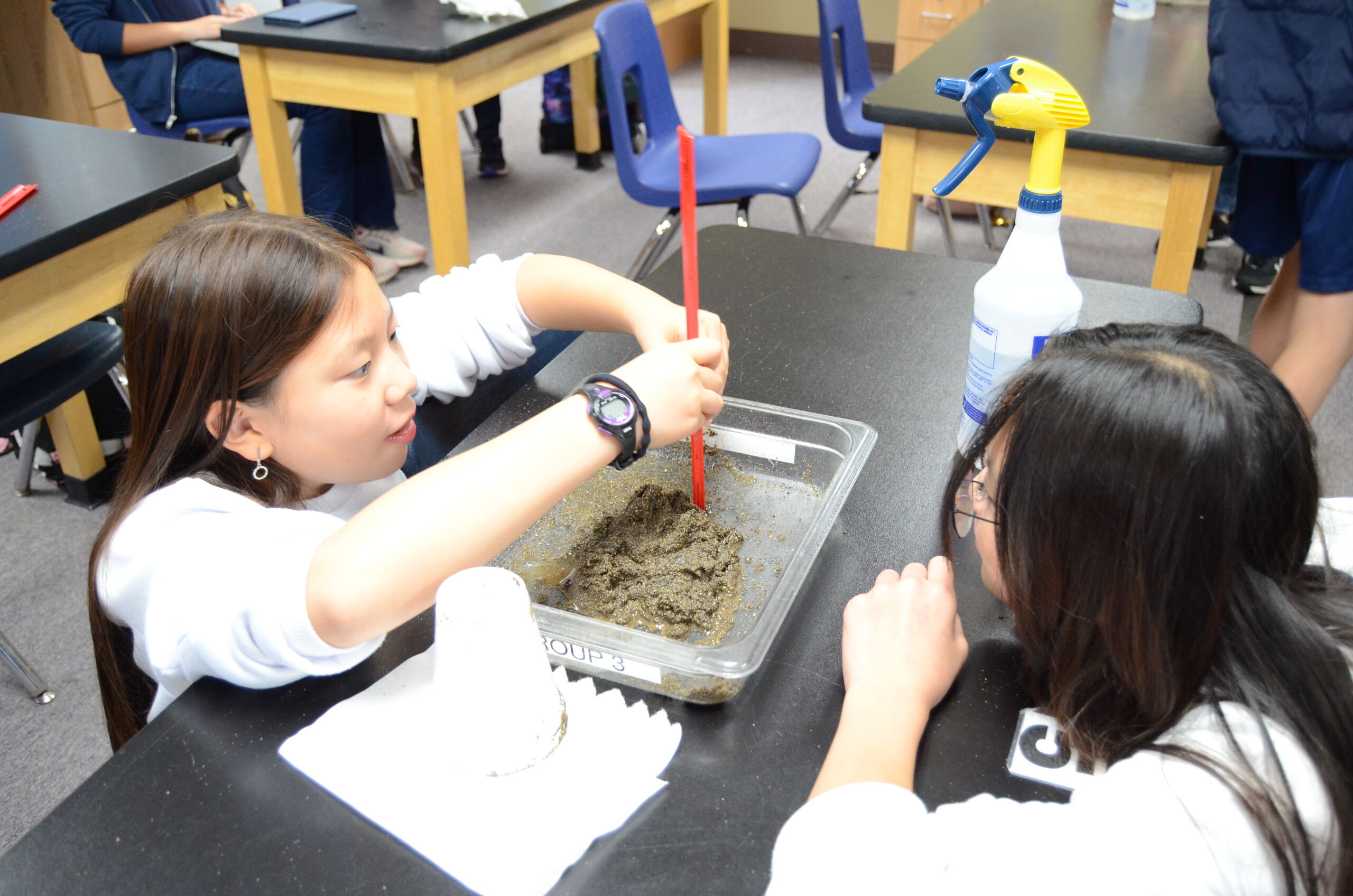
Our middle school science students recently learned about sediment, its effects on plant and animal life, and what we can do to maintain healthy habitats for all living things.
Sediment consists of soil particles like silt/mud, sand, gravel, cobbles, boulders, bedrock and clay. Streams naturally carry sediment and deposit it in many places along the streambed. This same sediment movement also causes erosion and is responsible for the wide variety of shapes of our streams. Healthy streams maintain their basic shape for long periods of time, which allows a wide variety of plants and animals to make streams their home.
In class, Mrs. Ibrahim set up a science lab so students could measure the effects of water erosion on sediment. Students created “sediment castles” and used a spray bottle of water to erode the sediment. The length of time that students sprayed water, and the size and composition of each sand castle were constant variables in their experiments, so their results could be more accurately compared. The independent variable was the amount of water sprayed, which was modulated by turning the spray bottle nozzle from “mist” to “spray” to “jet”. The end result was what most would hypothesize: factors such as water volume or speed of water movement result in erosion and sediment being moved from one place to another.
Too much sediment movement can dislodge small animals and smother them, especially on the bottom of the stream. Sediment build up in streams can reduce the available space for animal and plant life, and may suffocate animals in the stream or interfere with their food intake. Increased sediment creates muddy water, which reduces light necessary for photosynthesis. If certain chemical pollutants bind to soil on land and then find their way to streams, they can very rapidly change the water quality. These chemicals are often dangerous to small animals and plants as well as larger forms of life. If the processes continue the stream will not be able to support life for long periods of time, nor will it be any benefit for water supply, recreation or aesthetic purposes. Streams that have wide buffers protecting them from the surroundings are less likely to show a dramatic impact on the life of the stream.
To apply what students learned from this lesson, we ask “What can we do to minimize unnatural sediment movement?” and consider how our activities affect our local streams and the buffers that surround them. As stewards of God’s creation, we can all do our part to preserve our streams for the health of this and future generations.
